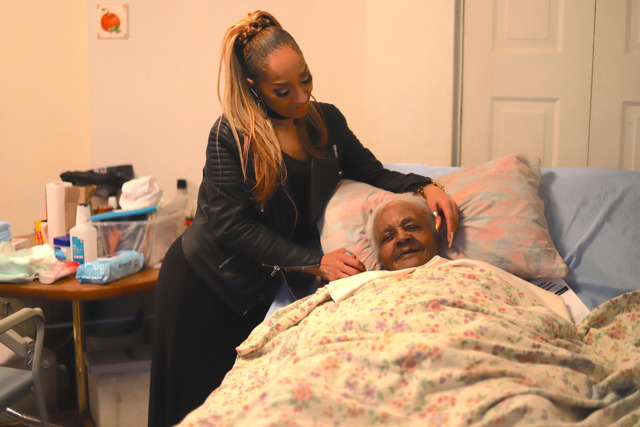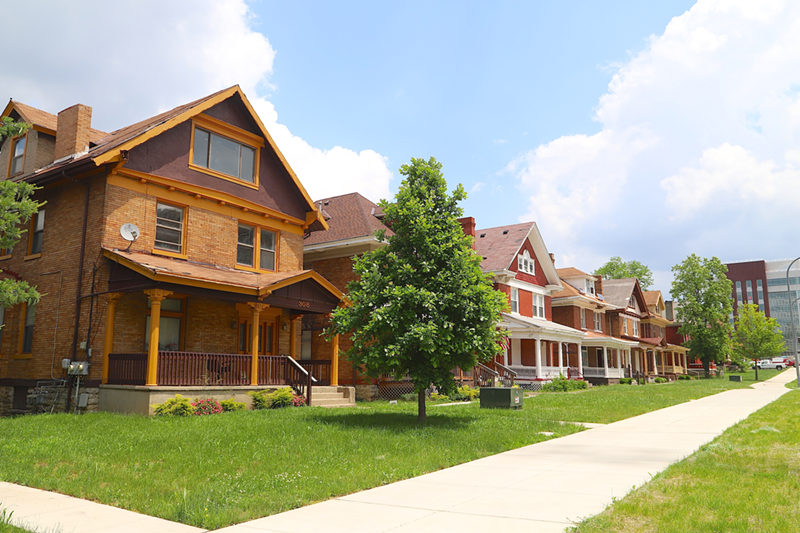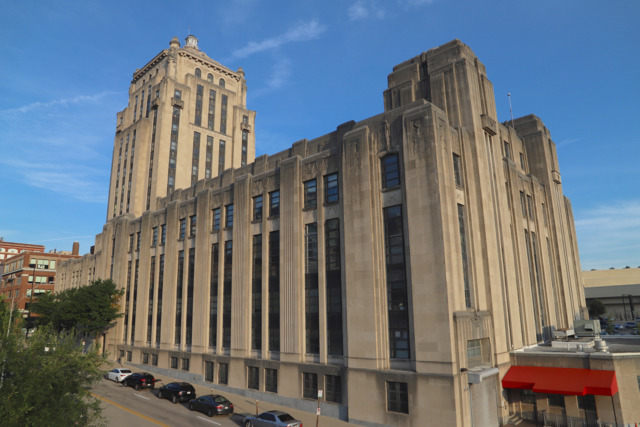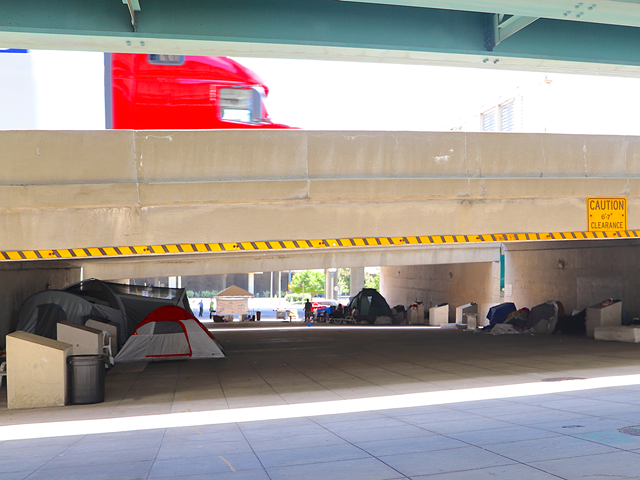If you expected 2019 to be anything else other than a wild ride news-wise, well, you haven’t been paying attention. But several stories in the national and local news landscapes were enough to surprise even the most jaded news junkie. Here are some of the major ones in no particular order — plus some of the in-depth, long-term news projects CityBeat published this year.
Eighty Years After a Unique Federal Experiment, Greenhills’ Complex Legacy is in Flux
In one of the more radical experiments the United States government has undertaken, federal planners embarked in the depths of the Great Depression on the wholesale creation of entire self-sufficient (and racially-segregated) “greenbelt” towns ringed by forests and farmland and built around collectivist principles.
The government built one of those towns, called Greenhills, on a flat sweep of farmland 15 miles north of Cincinnati.
These New Deal towns were meant to provide work and housing for those struggling under the harshest economic calamity the country had ever seen. But they also aimed to provide a new way of living together for the white residents lucky enough to be selected as “pioneers” to settle there.
CityBeat conducted in-depth interviews with original residents, historians, those who experienced integration efforts in Greenhills and others to try and understand the legacy of the federal government’s experiment at a time when the historic village faces demolition of some of its original structures.
For many original residents, the New Deal-era effort at Greenhills was a success. But the legacy — and future — of the Ohio town born out of this radical experiment is cloudier today. The march of time and social conventions shed harsh light on the town’s segregated origins. And recent demolitions have leveled some of the town’s original buildings.
In some ways, the greenbelt towns — Greenhills; Greenbelt, Maryland outside Washington, D.C.; and Greendale, Wisconsin, outside Milwaukee — would presage the rapid suburbanization of many predominantly white, middle-class Americans in the coming decades. That development was privately undertaken, of course, but was also encouraged and in some cases subsidized by the federal government.
But in other ways, the towns exist in their own strange moment in time; one in which, for a brief few years, federal authorities flirted with openly collectivist goals even as they dictated that their futuristic utopias be racially exclusive.
Eight decades removed, the lessons of the greenbelt towns may still have some relevance as contemporary America rediscovers a love for walkability and urban green space in its cities and struggles with housing affordability, residential segregation and its fraught, complicated relationship with collectivist ideas and policies.
U.S. Rep. Steve Chabot’s Treasurer Finds Out He is… U.S. Rep. Steve Chabot’s Treasurer
One of the biggest local political stories this year was the saga around more than $123,000 missing from U.S. Rep. Steve Chabot's campaign, which first came to light when the FEC flagged discrepancies in the campaign's financial filings this summer.
Jamie Schwartz, who has served as Chabot's campaign manager and in his congressional office, shuttered two political consultancies he ran and effectively disappeared as the inquiry heated up.
But there were more surprises coming. His father, Jim Schwartz, had been listed as the Chabot campaign's treasurer for years. But the elder Schwartz issued a statement saying he had no idea he was named on FEC forms as treasurer for the campaign.
“I am not now, nor have I ever been, the treasurer of the Steve Chabot for Congress campaign,” the Sept. 9 statement from Schwartz attorney Daniel J. McCarthy reads. “I have never served the campaign in any official capacity, including as treasurer, at any time. I played no role in the campaign other than as an occasional volunteer. I had no knowledge of the use of my name on any campaign documents or filings until recent reports.”
Mark Braden, an attorney for Chabot's campaign, said it appeared as though the campaign had been the victim of "financial malfeasance."
"Unfortunately, the misappropriation of funds by some campaign treasurers has been far too common an occurrence over the years," he said.
Braden said in the statement that the campaign is cooperating with a federal investigation into the missing money and is conducting an audit of the campaign's finances.
Chabot, serving his 12th term in Congress, handily beat Democratic challenger Hamilton County Clerk of Courts Aftab Pureval in 2018, netting 51 percent of the vote in a district that includes both blue-ing Hamilton County and deep-red Warren County. One of the more dramatic issues in that campaign hinged on questions around Pureval's use of money from his Clerk of Courts campaign account for his congressional run. The Ohio Elections Commission eventually dropped most of the charges against Pureval, who was fined $100 for paying a photographer who captured his congressional bid announcement with Clerk of Courts money.
Two Democrats — former military pilot Nikki Foster and healthcare executive Kate Schroder — are vying to challenge Chabot in 2020.
As Work on the West End Soccer Stadium Intensifies, Some Residents Face Relocation
As FC Cincinnati’s $250 million stadium began taking shape in the West End this year, CityBeat haunted the streets around the massive project to learn how it was impacting the historically low-income African-American neighborhood.
There have been some positives — construction jobs and contracts for minority-owned businesses. But there are big downsides for some residents and businesses. A popular soul food restaurant, Just Cookin’, left the neighborhood late last year, as did a neighborhood barbershop and its proprietor, who lived above it.
And they weren’t the only ones. In April, CityBeat met a resident in a building just north of the stadium who told a reporter that about a dozen residents on Wade Street and Central Avenue had been asked to leave their buildings by their landlord due to the coming soccer facility.
After doing some research and talking to those involved, CityBeat reported the residents’ plight and, two days afterward, discovered paperwork from the Hamilton County Auditor’s Office suggesting the team had purchased the properties.
A flurry of activity followed, with tumultuous government meetings, Cincinnati City Council motions and feverish negotiations between the team and the residents. Some have since found housing. Others are still looking as of press time — with a Jan. 31 deadline to vacate the premises.
The plight of the residents illustrates the scarcity of affordable housing in Cincinnati, the precarious balance between development and displacement in the city’s revitalizing neighborhoods and the impacts massive developments can have on communities that have seen sustained disinvestment over time. How those issues resolve — both for some of the residents at Wade and Central and for the city as a whole — remains to be seen.
Battle at the Banks
Stop us if you’ve heard this one: a music venue, a concrete facility, the Hamilton County Commission, a proposed neighborhood park and a professional football team walk into City Hall…
All jokes aside, the wrangling over Cincinnati Symphony Orchestra concert promotion arm MEMI’s music venue proposed for The Banks riverfront development was likely one of the city’s most convoluted development debates ever. After initially pushing for Columbus’ PromoWest to take on the project, Mayor John Cranley didn’t like the location Hamilton County wanted and Cincinnati City Council agreed upon. Building the venue there meant relocating a long-standing building materials company called Hilltop Basic Resources to make more parking for the Cincinnati Bengals, who have veto power over the music venue’s location.
But moving Hilltop to Queensgate was politically fraught due to fears about pollution in nearby west side neighborhoods and displacing another business on the potential site.
Did you get all that?
Eventually Hamilton County Commission member Todd Portune and Cranley got together on a Saturday and hammered out a complex compromise that will allow the venue to go forward… just in time, hopefully, to compete with a similar venue (created with PromoWest) going in across the river in Newport. Who said getting things done was easy?
Zero-Tolerance Immigration Policy Leaves Some Greater Cincinnatians as People Without a Country
Ohio has the densest population of people from the West African country of Mauritania in the United States — roughly 6,000, by some estimates, including 3,000 in Columbus and another large population on the suburban fringes of Cincinnati.
Many didn’t know each other when they came here, but they have knitted together a community, attending local mosques and sometimes celebrating at barbecues and evening get-togethers.
They married, had children, started businesses, bought houses. Many who saw brutal violence as part of a crackdown on black Mauritanians by an Arab ruling class called Beydanes in the late 1980s tended mental and physical wounds, slowly finding some equilibrium and normalcy here.
But those who did not get their asylum claims granted by federal judges are slowly disappearing, seized by Immigration and Customs Enforcement under recent zero tolerance immigration policies ushered in by the Trump administration. Once picked up, they are subject to long stays in places like the Butler County Jail and federal holding facilities and, eventually, deportation back to Mauritania.
There, they face imprisonment — or worse.
Officially, the Mauritanian government declared slavery abolished in 1981, making Mauritania the last country to do so. The practice of owning other people, however, wasn’t made actually illegal until 2007, and since then, the government has successfully prosecuted only one slave owner. However, officials there maintain that slavery is a thing of the past.
But the United Nations estimates that between 10 and 20 percent of the country’s population — between 340,000 and 680,000 people — are enslaved.
CityBeat spoke to members of the Mauritanian community, including activists, those in hiding fearing deportation and a former Greater Cincinnati resident deported back to Mauritania who immediately fled to neighboring Senegal due to persecution.
In effect, those detained and deported become people without a country, since Mauritania often does not recognize them as citizens. That puts them in grave danger, activists say — and leaves gaping holes in the communities they’ve helped establish here in Greater Cincinnati.
Those who can have sold their businesses or houses, cashed in retirement plans and fled to Canada, Sow says. Those who cannot hold their breath.
Kentucky Gets a New Governor
After a bitter, bitter campaign, Kentucky Attorney General Andy Beshear defeated incumbent Gov. Matt Bevin by the slimmest of margins in the state's gubernatorial contest. Beshear, a Democrat, scored a narrow 4,650-vote lead over Republican Bevin.
Bevin, however, said at first he would not concede the race, indicating he would ask election officials to check voting machines throughout the state. It was a week before the outgoing governor admitted defeat.
In amassing his slim lead, Beshear flipped some suburban Northern Kentucky counties that Bevin handily won in 2015 and that fellow Republican President Donald Trump took in the presidential election the next year. Beshear narrowly won Kenton County and turned in a somewhat more robust performance in Campbell County. Bevin won both of those counties handily in 2015, grabbing 57 percent of the vote in Kenton County.
Beshear's victory came despite — or, depending on who you talk to, partly because of — Bevin's alignment with Trump. The president, who won Kentucky overall by 30 points in 2016, swooped through the Bluegrass State to campaign for Bevin.
"You're sending that big message to the rest of the country," Trump said at one rally. "It's so important — you have to get your friends, you have to vote. If you lose, it sends a really bad message… you can't let that happen to me."
Despite Kentucky being one of five states to hold its gubernatorial elections on years without federal elections to draw big attention, it was a bruising contest between the two focusing on tough questions around the region's aging Brent Spence Bridge, the state's ailing pension fund, related "sick-outs" by the state's public school teachers, health care policy, abortion and other big issues.
What’s Behind Disparities in Homeownership in Cincinnati?
Buying a home is often framed as a quintessential part of the American dream.
But data shows that the dream doesn’t manifest itself equally for everyone in Cincinnati. About 24 percent of black households in the city owned a home in 2017, for example. Meanwhile, roughly 50 percent of white households in Cincinnati lived in a home they owned that year, according to an aggregate of five years of American Community Survey results from the U.S. Census Bureau.
CityBeat took a deep dive into why so many fewer black residents in Cincinnati — like elsewhere across the country — own their own homes. The reasons for the disparity are complex, and some are linked to decades of past discrimination.
For a number of reasons, the difficulties of home buying are often compounded for people of color.
A pervasive wealth gap and paucity of financial services in low-income and many black communities contributes to the home ownership chasm, experts say. Plus, a lack of loans under $50,000 often block prospective homebuyers from buying property in lower-income neighborhoods.
And getting a home isn’t the end of the struggle. Sometimes, less-ideal means of securing homeownership via nontraditional sales like land contracts translate into difficulties down the road.
Studies show that properties in predominantly black areas in Cincinnati don’t gain equity at the same rate properties in other neighborhoods do — if they gain any at all — leaving black homeowners with less wealth accumulated over time and less ability to move into more desirable neighborhoods.
“Starting with racism, starting with an economic deficit for moderate-income people and then oversight (by the federal government) that does not take equity into consideration, all of those things are challenges for homeownership,” says Rick Williams, president and CEO of the Home Ownership Center of Greater Cincinnati, a nonprofit that provides guidance for prospective home buyers. “It can make the American dream of homeownership fake for minorities and moderate-income people, because what is supposed to come with it after the closing doesn’t.”
Williams is quick to point out that not all African Americans are also low-income, but says that a number of difficulties with the home-buying process can follow higher-income black homebuyers as well.
There are places like the Home Ownership Center where potential homebuyers can find help, as well as city programs that offer down payment assistance and other aid. There are also nonprofits like Housing Opportunities Made Equal Cincinnati (HOME), which advocates for changes that could boost equity for minority and low-income home buyers in the long term.
Despite those efforts, though, many black residents of Cincinnati still face a tough time buying a home — a dynamic borne out by the statistics showing the gaps between minority and white homeownership rates.
The Unabated Fight Over Tax Abatements
For the entirety of this year, the City of Cincinnati and Cincinnati Public Schools have been locked in debate about the replacement for a once-obscure 20-year-old deal between the two.
That agreement let the city create more generous property tax abatements and tax increment financing districts that city planners say are necessary to incentivize development. In return, the city paid a lump-sum payment to the district every year and developers paid part of their tax incentive back to the school district to make up for lost revenue.
Property tax abatements allow developers to forego increased property taxes on improvements they make to properties via renovation or new construction. Tax increment financing — or TIF — takes revenue from increased property values and applies it to public infrastructure projects or to a particular development.
CPS, which is supported primarily by property tax revenue, says that agreement has cost it many millions of dollars over the past two decades as development has heated up in some Cincinnati neighborhoods. The city, however, says that due to a complex state funding formula, the district actually comes out ahead due to the abatements.
The fight between the city and the district has opened up a larger debate about the proper role of tax incentives as the city looks to increase development while struggling with an affordable housing shortage and other big issues.
At press time, the city and school district could not agree on a new arrangement — and the current deal struck in 1999 ends Dec. 31.
A Deep Dive Into Juvenile Justice
The Hamilton County juvenile justice system has been in the background of local conversations about crime, justice and race this year. In the midst of a sweltering summer during which gun violence claimed the lives of multiple minors as young as 14, the saga of Democratic former Hamilton County Juvenile Court Judge Tracie Hunter reached a furious coda when she was dragged out of a Hamilton County courtroom to serve a six-month sentence.
Hunter ran on promises to reform the county’s juvenile system, and, her supporters say, paid a political price for trying to do so. Others, however, say Hunter fell behind on her job, didn’t work with other judges and broke the law.
Whether or not Hunter was treated justly, the racial disparities she campaigned on fixing are real, viewable in black and white in the form of Hamilton County Juvenile Court data and Cincinnati Police arrest records.
In a county where Census data says 30.3 percent of people under 18 are African American, 81 percent of the more than 2,000 minors issued warrants through the Hamilton County Juvenile Court last year were black, according to data CityBeat obtained from the court — up from 75 percent in 2015. And 75 percent of the 930 young people admitted to the county’s youth detention center in 2018 were black — though that’s down from 80 percent in 2015.
Those disparities also exist on the front lines of the juvenile justice system: select streets and schools in Cincinnati and its poorer suburbs, most predominantly black, where police make the most juvenile arrests. In Cincinnati, which is about 43 percent black, 85 to 90 percent of juveniles arrested by Cincinnati Police have been black in recent years, arrest data from the city shows.
Few dispute the clear over-representation of black youth in the county’s juvenile justice system. And those disparities certainly aren't unique to Hamilton County — they're part of national trends involving race and the justice system in a country where the prison population ballooned from 500,000 in 1980 to more than 2 million by 2015 and in which black citizens are incarcerated at five times the rate whites citizens are. Those trends extend to juveniles. While roughly 14 percent of the U.S. population under the age of 18 is black, 42 percent of children detained in juvenile justice systems across the country are black.
But that is just the start of a vast, complicated conversation. Why are so many more black youth arrested in Hamilton County, either in schools or in neighborhoods? What happens to them when they enter the juvenile system? What roles do racial bias, socioeconomic factors and the trauma that can come with growing up without resources play?
Pushing against these questions are still more numbers: police are arresting far fewer youth than they used to — part of a national trend in falling crime rates — and Hamilton County Juvenile Court is locking up or sending away far fewer of them to state juvenile detention centers thanks in part to a series of diversion programs, court officials say. In the last five years, the number of youth detained in Hamilton County has dropped nearly 20 percent.
CityBeat dug into all that data and conducted more than two-dozen interviews with youth in the justice system, adults who came out the other side, public defenders, attorneys, activists, Cincinnati police, judges and court employees as part of a four-part series on juvenile justice attempting to get nuanced answers to some of the toughest questions facing young people in our region.
U.S. House Impeaches President Donald Trump
Here’s a story from this year that will almost certainly continue dominating headlines in the next. President Donald Trump faces impeachment hearings in the U.S. Senate brought by Democrats in the U.S. House of Representatives over a phone call with Ukrainian President Volodymyr Zelensky in which Trump appeared to offer the release of U.S. aid to Ukraine in exchange for an investigation into Democratic Party presidential primary hopeful and former Vice President Joe Biden.
The president's critics — including Democrats but also U.S. Sen. Mitt Romney, a Republican — say the president broke the law with those statements and subsequent public statements asking Ukraine and China to investigate Biden and his son, Hunter Biden, who served on the board of an energy company in Ukraine.
During his time as vice president, Biden pushed Ukraine to remove Viktor Shokin, a prosecutor there long-thought to be corrupt. Trump alleges that the elder Biden did so because that prosecutor was investigating his son. Thus far, there is no evidence that this was the case — and a number of statements from officials both in the U.S. and Ukraine, including U.S. Sen. Rob Portman of Ohio, show that the prosecutor who was removed was indeed suspected of corruption.
Looking for more of a quasi-local angle? Senate Majority Leader Mitch McConnell of Kentucky has called the impeachment efforts against Trump "laughable" but said he will have little choice but to take up the articles of impeachment when they come to the Senate. That body's constitutional responsibility will then be to consider the allegations against the president in a trial. But McConnell, never one to shy away from controversy or rally his base, isn't exactly sitting quietly waiting for the chips to fall where they may. He’s indicated he’ll fight the impeachment effort every step of the way.











